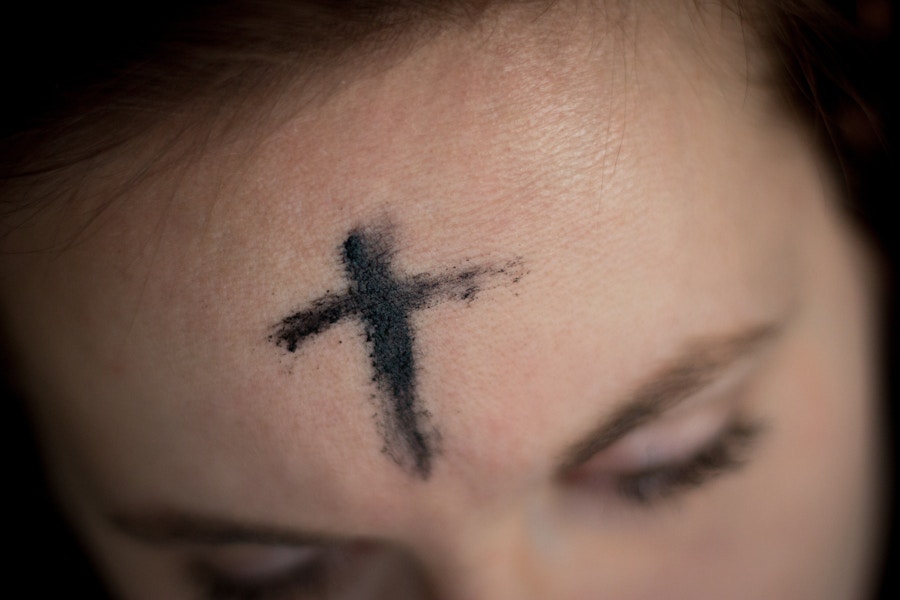 Excerpt from Less is More
Excerpt from Less is More
Less is More, a Renovaré Lent devotional, is available in 2020 as a free e‑book (PDF).
More than a decade ago, I gathered with a group of local pastors, representing many denominations, to discuss a worship service we would offer to galvanize our community around a specific outreach initiative. As we were agreeing on a date for the worship service, one of my pastoral colleagues reminded us that the date we had selected was on a Wednesday night in the season of Lent. He wondered if that would be an issue for some of the liturgical churches.
The Senior Pastor of the local independent Baptist church was quick to respond. “Lent? What’s that? Are you talking about the fuzzy stuff I often find in my belly button?” (Lint!)
We had quite a laugh. Yet, his comment exposed the gulf that lies between the current streams of the Christian tradition when thinking about and practicing the rhythms of the church year. Ironically, ten years later, this same Baptist church created a daily Advent devotional for their congregation in preparation for the celebration of Christ’s birth. Liturgical Renewal? Possibly. I would suggest that many parts of the modern church movement, having sold out to the heresy of “new is always better,” are awakening to the beauty of ritual and the recurring rhythms of the church that embed the life of God deeply within our souls. The season of Lent is one of those recurring rhythms that ritualizes the beauty of God’s life-giving, redemptive work in Jesus’ death and resurrection.
Though the concept of Lent, a season of preparation for the celebration of Christ’s resurrection, was being articulated as early as the second century, the liturgical season of Lent seems to have taken form in the 4th century. The Council of Nicea (325) called for two gatherings of the synods, one of which was to be held before the forty days of preparation for Easter. By the end of the 4th century, the forty days of Lent had become integrated into the yearly rhythm of the Christian community as they prepared, primarily through the spiritual disciplines of fasting and prayer, for the celebration of Christ’s resurrection.
The number forty has both biblical and spiritual significance. We recall the forty years of wandering in the wilderness for the people of Israel. Moses communed with God on the top of Mount Sinai for forty days and forty nights, eating no bread nor drinking water, as he inscribed the words of the Ten Commandments on tablets of stone (Exodus 34:28). Elijah journeyed to Mount Horeb for forty days and forty nights without food nor drink (I Kings 19:8). We also remember Jesus being led by the Spirit, following his baptism, into the wilderness where he fasted for forty days and forty nights (Matthew 4:1 – 2). In each case, whether forty years or forty days, the number forty spoke not only to a span of time but also a span of God’s ongoing presence experienced in trial and temptation, through accumulated wisdom and insight, and by God’s sustaining grace and love.
This is the forty day journey of Lent.
Marked in Days but Lived in Grace
For much of the Christian community, the forty days begins with Ash Wednesday (though the Eastern Orthodox church counts forty days back from Palm Sunday) and continues through the Holy Week stories of Jesus’ arrest, trial, and crucifixion. Sundays are not included in the forty days since they are always, even in the season of Lent, a celebration of Jesus’ resurrection.
The image of Ash Wednesday, ashes marked in the sign of the cross on our foreheads, invites us into the season with the proper attitude – humility. The ashes recall God’s words to Adam following his transgression of the boundary around the tree of the knowledge of good and evil. “By the sweat of your face you shall eat bread until you return to the ground, for out of it you were taken; you are dust, and to dust you shall return.” (Genesis 3:19)
For all our railing against it, our mortality is uncovered once again. We cannot deny. We are dependent on the God who breathed life into the dust of the earth and created humanity. We are not the masters of our universe. We have and will continue to fall short of the glory of God (Romans 3:23). In humility we are marked with the cross — the symbol of violent death and the gateway to victorious life, and humbly say to God, “In life and death, we are yours.”
In that way, the season of Lent mirrors our lives in Christ. Confronted by our humanity, our imperfections, and our brokenness, we cast our gaze on the one who took on our humanity, loved us even with our imperfections, and longs for us to be whole. A curious thing happens when we honestly look within, release control, and confess our dependence. Instead of losing power, we open ourselves to new strength. We empty ourselves of self-delusion and self-satisfaction, and we are filled with new identity, our identity in Christ, and the journey of Lent commences.
For centuries, the weeks of Lent were used catechetically for those desiring to be baptized and follow Jesus. The basics of the Christian faith were taught and experienced, leading the new follower to be baptized during the Easter Vigil (the worship service on the Saturday evening of Holy Week). As the church reenacted the events of Holy Week; the ride into Jerusalem on Palm Sunday, the gathering of the disciples on Maundy Thursday around the meal of Passover when Jesus gave the command (Maundy is derived from the Latin word for command) to “love one another as I have first loved you” (John 13: 34), the immersion into the darkness of his death on Good Friday (Good only because we know the rest of the story), the Easter Vigil service would begin by lighting a new fire. Light would penetrate darkness. Capturing all the baptismal images of darkness and light, despair and hope, death and life, the service would usher the community and the new followers through the mystery of God’s redemptive work on the cross and the glory of his resurrection on Easter Sunday.
So What About Today?
In my recent reading about creativity, I have stumbled over this concept in many places — “the on/off pulse of creativity.” Those who have studied the creative process are aware that we don’t have the physical, emotional, and/or spiritual capacity to be on all the time. For anything new or novel to come from our minds, our lives, we must press in at times and then back off at other times. In the pressing in, we dive deeply into the heart of the creative process. In backing off, we create space for, as some may say, the muse, or we would say the Spirit, to enter. Both are necessary for something new or novel to emerge from our lives.
Maybe we need to consider Lent as one of those seasons of intentionally pressing in. Culturally, we are distracted by many things. If we do not pay attention to our souls, our capacity to be open to God’s creative work in our lives is diminished. The season of Lent presents an opportunity to reflect on the state of our souls before God, the contour of our lives with others, and, above all, the prevailing promise of Jesus’ resurrected life as it breathes new life, new courage, new hope in us and through us, for the sake of the world.
It is no coincidence that the Anglo-Saxon root word for Lent means “spring.” Pressing in to the season of Lent is a creative exercise in God’s possibility of re-birth for you, for the neighbor, for the whole of creation.
Text First Published December 2012


